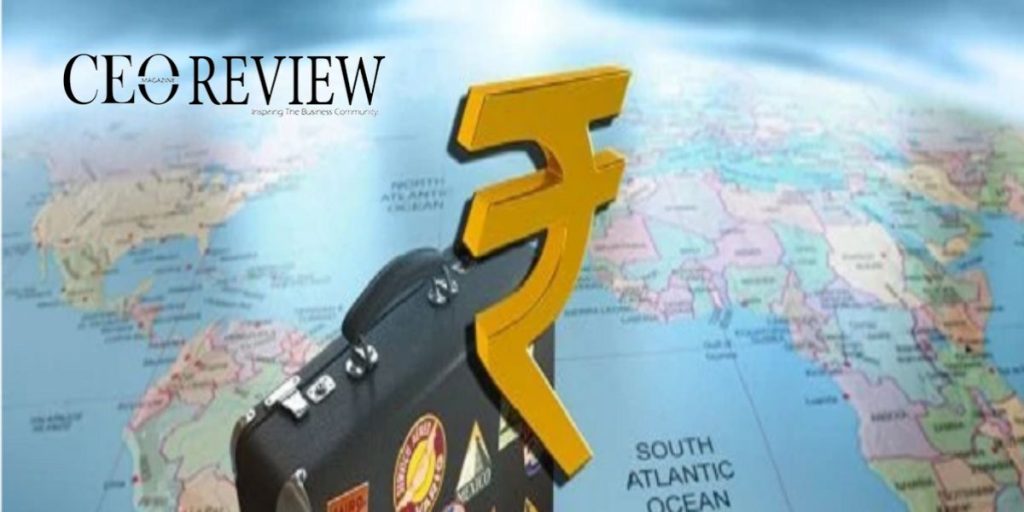10 Most Expensive Travel Currencies for Indians in 2024
The currency exchange rate is a leading consideration for Indian tourists when planning international travel. The INR’s value against foreign currencies have implications on budgeting for accommodation, food, transport and other expenses incurred during the trip. Travel costs can fluctuate widely because of currency fluctuations in the country that one intends to travel to. In 2024, some currencies have been particularly expensive for Indian travelers. This article explores the top ten most costly traveling currencies for Indians in this year, revealing economic factors behind them and their being worth so high.
Here is a list of the 10 most expensive travel currencies for Indians in 2024:
- Kuwaiti Dinar (KWD)
In 2024, the Kuwaiti Dinar (KWD) remains to be the world’s highest valued currency. This currency has been sustaining its strength from 1960 onwards due to a large amount of oil reserves and an economic stability within Kuwait which are reasons why it is the most expensive among Indian travelers with an average exchange rate of about 272.21 INR per KWD.
Factors Contributing to High Value:
- Oil Exports: It provides a strong base for economy as Kuwait happens to be one of largest oil exporters globally.
- Fixed Exchange Rate: Its linkage with basket including JPY, EUR and USD is instrumental in maintaining its stability.
- Political Stability: It attracts foreign investment as it remains politically stable.
- Currency Scarcity: Controlled supply actually adds more value to the KWD by Central Bank of Kuwait.
2. Bahraini Dinar (BHD)
Indian expats in Bahrain find that they work with another costly currency called Bahraini Dinar (BHD). The exchange rate stands at around 221.38 INR per BHD.
Factors Contributing to High Value:
Oil and Gas Exports: An economy depended on exports of petroleum products such as oil from these two countries
Fixed Exchange Rate: There are no changes in this country’s currency since it was tied to US dollar.
Low Inflation: A stable monetary system is possible with inflation rates staying low.
3. Omani Rial (OMR)
As for Indian travelers, the most expensive third currency is Omani Rial (OMR), with an exchange rate of about 216.77 INR per OMR. Oman’s strong economic position prompts its currency.
Factors Contributing to High Value:
Oil Exports: Much like Kuwait, oil accounts for a significant proportion of Oman’s national income.
Fixed Exchange Rate: It also has been linked to USD.
Low Inflation: Low levels of inflation in Oman have led to the strengthening of its currency.
4. Jordanian Dinar (JOD)
For Indians travelling abroad this year, the fourth costliest currency would be the Jordanian Dinar (JOD) whose rate stands at approximately 117.76 INR per JOD.
Factors Contributing to High Value:
Fixed Exchange Rate: The United States dollar anchors it.
Diversified Economy: A multifaceted economy reduces dependence on one sector and contributes to currency stability in Jordan.
5. British Pound (GBP)
Exchange rate of approximately 105.96 INR per GBP and it holds the fifth position overall.
High Value Factors:
The UK has a strong and diverse economy.
Political stability in Britain also encourages confidence among investors.
Independence of bank of England to ensure financial stability.
6. Gibraltar Pound (GIP)
Approximately 105.69 INR per GIP at number six, next to the British pound which is its pegging currency. As a British overseas territory, Gibraltar benefits from economic stability and a thriving tourism industry.
Factors Contributing to High Value:
It is linked with the sterling pound that gives it an advantage as well. The major support industries are tourism and financial services.
7. Cayman Islands Dollar (KYD)
KYD which is the seventh most expensive currency costs about 100.21 rupees per KYD. It is a strong currency as long as economy in Cayman Islands lies on financial services and tourism;
Factors Contributing to High Value:
Its value is tied to US dollars. Tourism helps keep the economy strong. The low amount of debt relative to GDP enhances its capacity for purchasing
8. Swiss Franc (CHF)
At number eight, CHF has approximately 93.36 INR per CHF, making it one of the strongest currencies in world market due to Switzerland’s political stability and strong economy factors.
Factors Contributing to High Value:
Switzerland remains politically and financially stable. Strong economy and conditions such as low inflation rates contribute towards this fact. Central bank policies focus on price stability according to SNB
9. Euro (EUR)
Euro (EUR) is the official currency of the Eurozone, ranking as ninth and has an exchange rate of about 89.54 INR per EUR. It is the second most widely traded currency in the world and a major reserve currency.
Factors Contributing to High Value:
Large Economy: The Eurozone is second biggest economy globally.
Political Stability: Investment gets attracted by political stability within the zone.
Low Interest Rates: These are usually less than rates in the US.
10. United States Dollar (USD)
United States Dollar (USD) is tenth most expensive for India travelers while exchanging at about 83.44 INR per USD; it is also probably world’s most exchanged one and serves as a primary global reserve currency
Factors Contributing to High Value:
Strong Economy: US has World’s largest economy.
Global Reserve Currency: Central and commercial banks worldwide hold USD
Political Influence: Backed by USA’s global political influence which supports it dollar value.
Economic Factors Influencing Currency Value
Understanding the economic factors that affect currency values provides insights into why these ten currencies have such high values compared to INR.
- Supply and Demand Dynamics
Supply and demand principles apply to currencies. A currency with high demand and low supply will generally appreciate in value. Factors such as foreign investment, exports, tourism can add more demand on a particular currency.
2. Inflation Rates
Inflation rates that are low portray stable economies, which strengthen their respective currencies. Conversely, inflation levels that are high can erode a money’s purchasing power thereby depreciating it.
3. Economic Growth
A country with strong economic growth attracts foreign investment thereby leading to appreciation of its currency values up. Among other things GDP growth rate, employment rate, industrial production, etc. are used as economic indicators in gauging how healthy an economy is.
4. Central Bank Policies
Monetary policies are employed by central banks to ensure currency stability. Interest rates, foreign exchange interventions and inflation targeting are some of the tools used by central banks.
5. Political Stability
Political stability is a significant determinant of attracting foreign investment. Such nations with stable political environments are often viewed as safe investments thus this adds value to their currencies.
6. Global Commodity Prices
Countries that majorly export commodities such as oil could have their currencies strengthened by high global commodity prices. Conversely, these currencies can be hurt when commodity prices fall.
Implications for Indian Travelers
Understanding the exchange rates and economic factors behind these currencies can assist Indian travelers in planning and budgeting for international trips. Some implications include:
- Travel Budgeting
A strong currency means higher travel costs. When setting budgets for lodging or food, Indians should consider those exchange rates.
2. Currency Conversion
When it comes to converting money, keeping an eye on exchange rates and switching at favorable times is recommended. Forex cards or travel cards provide means of managing expenses.
3. Destination Choices
Currency’s worth has an impact on choosing destinations. Sometimes travelers choose places with better conversion rates so as to maximize the amount spent on traveling.
Conclusion
The importance of knowledge concerning exchange rates and economic determinants is highlighted by the top ten most expensive travel currencies for Indians in 2024. Consequently, each currency from the Kuwaiti Dinar to the US Dollar holds different positions due to various economic forces. Thus, it is important for Indian travellers to be aware of this when planning or setting a budget for their journeys.
Frequently Asked Questions
Q1. What currency is the world’s strongest?
A: The Kuwaiti Dinar (KWD) stands as the most powerful currency in the world which trades at around 272.21 INR per KWD.
Q2. Which stable money is internationally recognized?
A: Most people believe that among all others, Switzerland and Liechtenstein’s Swiss Franc (CHF) is by far the steadiest.
Q3. What makes Kuwaiti Dinar valuable?
A: The sustainably high value of Kuwaiti Dinar has been attributed its large volume of oil exports, pegged rate against a range of currencies, political stability as well as limited supply by Central Bank of Kuwait.
Q4. What are seven key factors influencing currency values?
Answer: Inflation rates, interest rates current account deficit national debt recession and speculative activities are some major determinants of exchange rates.
Q5.How do Indian travellers get affected by high-value currencies?
Answer: Indian travelers find it difficult in dealing with high valued currencies since they will need to budget their costs so that they do not exceed their means while traveling.







